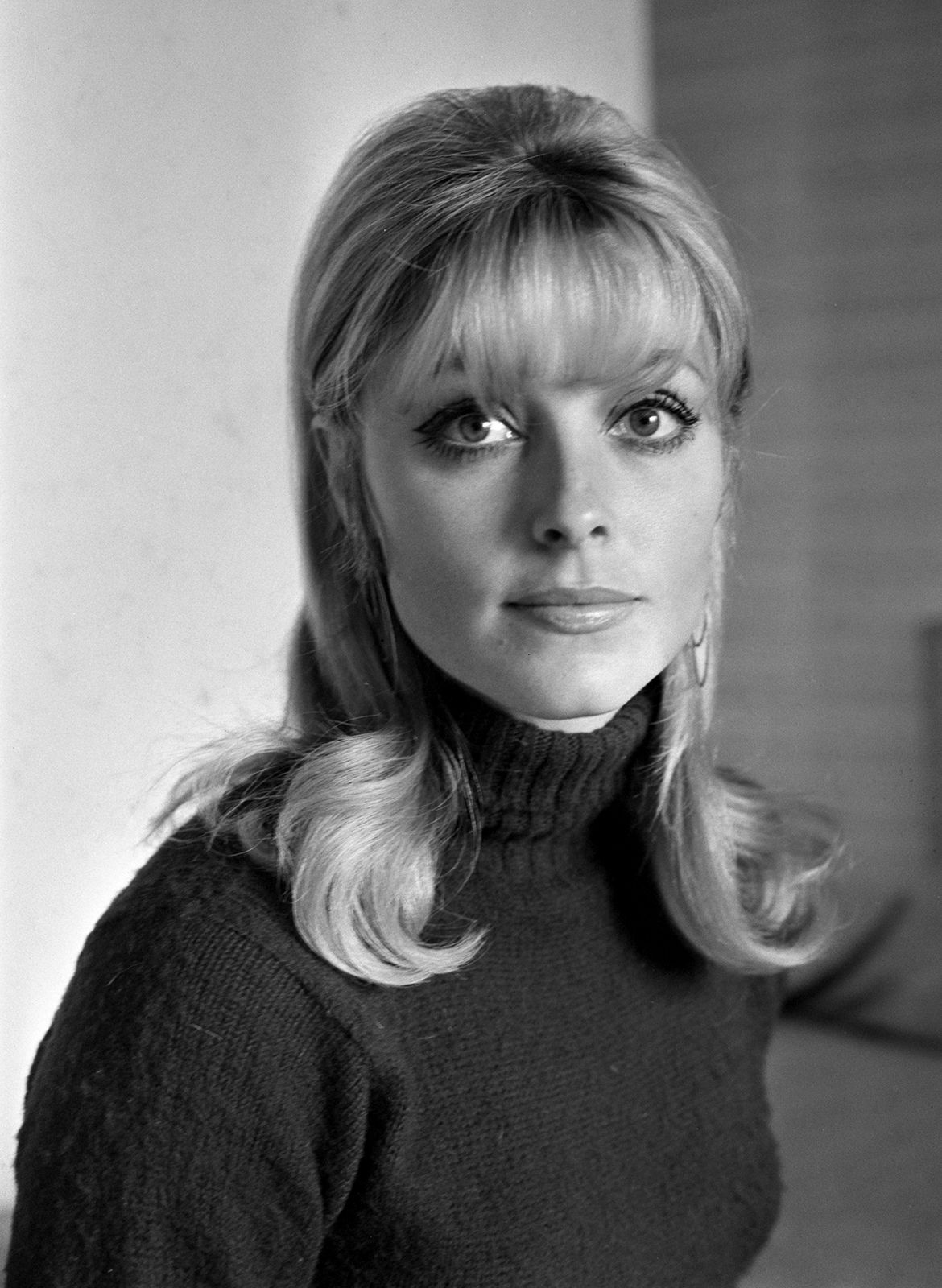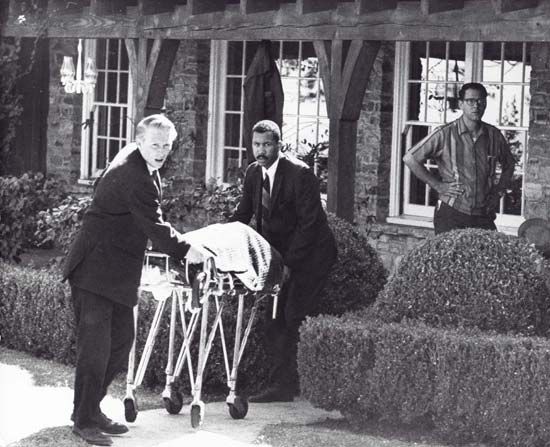Tate murders
Our editors will review what you’ve submitted and determine whether to revise the article.
- Date:
- August 8, 1969 - August 9, 1969
- Location:
- California
- Los Angeles
- United States
- Key People:
- Sharon Tate
- Charles Manson
What were the Tate murders?
What were the events that led up to the Tate murders?
Why did the Manson Family murder Sharon Tate?
When were the Tate murderers caught?
Tate murders, the shocking and grisly murders of actress Sharon Tate and four other people by followers of cult leader Charles Manson on the night of August 8–9, 1969, in Los Angeles. Two more people were killed on August 10. After two highly publicized trials, Manson and four of his followers were convicted of all the murders in 1971.
Tate, a fledgling actress whose best-known movie was Valley of the Dolls (1967), was married to filmmaker Roman Polanski and was more than eight months pregnant. In the summer of 1969 the couple was renting the house at 10050 Cielo Drive, in the exclusive Benedict Canyon neighbourhood of Los Angeles. While Polanski was in Europe, his friend Wojciech Frykowski and Frykowski’s girlfriend, coffee heiress Abigail Folger, were staying with Tate.
On August 8, Manson ordered his follower Charles “Tex” Watson to go to 10050 Cielo Drive with several other cult members and kill everyone there “as gruesome[ly] as you can.” Manson was familiar with the house because its previous tenant, music producer Terry Melcher, had earlier considered and then decided against giving Manson a recording contract. Watson drove to the estate with Susan Atkins, Patricia Krenwinkel, and Linda Kasabian. When they arrived on the property after midnight, they encountered a car driven by Steven Parent, an 18-year-old who had been visiting the estate’s caretaker at his home in the guest house. Watson shot Parent to death before he, Atkins, and Krenwinkel broke into the main house, leaving Kasabian to stay at the gate as a lookout. The four people in the home—celebrity hairstylist Jay Sebring, a close friend of Tate’s, was also there—were made to gather in the living room, and Tate and Sebring were linked by ropes tied around their necks. Sebring was shot and stabbed to death. Frykowski and Folger managed to free themselves and flee the house, but both were chased down and killed by Krenwinkel and Watson. Finally, Atkins and/or Watson fatally stabbed Tate. As they left, Atkins used Tate’s blood to write the word “PIG” on the front door.

The following night, Manson took Watson, Atkins, Krenwinkel, and Kasabian as well as Leslie Van Houten and Steven “Clem” Grogan in search of more people to murder. Manson selected the Los Angeles home of grocery store executive Leno LaBianca and his wife, Rosemary. After Manson and Watson tied the couple up and robbed them, Manson left with Atkins, Kasabian, and Grogan. Watson, Van Houten, and Krenwinkel remained and, acting on orders from Manson, stabbed the couple to death, again leaving words written in blood on the walls.
The crimes created a panic in Los Angeles, especially given their horrific nature; Frykowski had been stabbed more than 50 times and shot twice. Investigators were initially baffled and failed to make the connection between the two murder scenes, with detectives convinced that a drug transaction was the likely trigger for the Tate murders. However, in October 1969 various members of the Manson cult were arrested at their base, Spahn Ranch in Death Valley, accused of stealing vehicles and burning equipment. One of those arrested implicated Atkins in an earlier murder, and Atkins, while jailed, boasted to cellmates of the Tate murders. By year’s end all of the killers had been arrested.
The trial, which combined the Tate and LaBianca murders, began in June 1970, with Kasabian, who had been granted immunity, as the main prosecution witness. Despite frequent disruptions, Manson, Atkins, Van Houten, and Krenwinkel were found guilty in January 1971. Watson was tried and convicted later that year. All received the death penalty, but the sentences were commuted to life in prison after California abolished capital punishment in 1972. Although they became eligible for parole, their requests were repeatedly denied. However, in 2023 Van Houten, who was 73 years old, was granted parole and released from prison. The story of the Tate and LaBianca murders was recounted in the book Helter Skelter: The True Story of the Manson Murders (1974), cowritten by Vincent Bugliosi, who served as prosecutor at the trial.


















